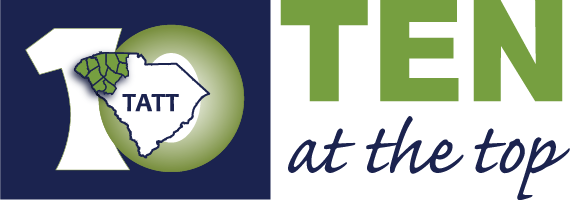
Jun 17, 2020 | Staying on Top, UpstateVibe365
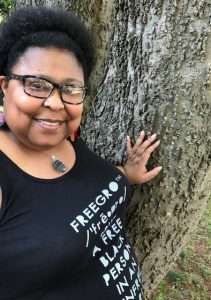
Davelyn Hill, Program Director, Speaking Down Barriers
with Sharon Purvis
Speaking Down Barriers is a Spartanburg-based non-profit that seeks to foster dialogue and trust among people of different racial backgrounds as well as those from different genders, orientations, and ethnicities. The group builds community through affinity groups, offers workshops on diversity and inclusion, and hosts a monthly book club, Reading for Transformation, that selects challenging texts and encourages honest conversations about the ideas presented. The following is a conversation with Davelyn Hill, Program Director at Speaking Down Barriers.
Q: Can you tell us a bit about the impetus for starting Speaking Down Barriers and how long the organization has been in existence?
It began in 2013 as an ongoing community dialogue called “Poetry and Conversation,” which offered a unique opportunity for residents of Spartanburg to share stories and art with one another, building community with people who were different from them. There is no expert in this kind of dialogue. People can learn from the person sitting next to them instead of simply looking to the person who is facilitating the conversation. Many of the poems shared were and still are autobiographical. It is difficult to argue with somebody’s lived experience. This kind of sharing often brings forth empathy instead of division.
It has since been renamed Speaking Down Barriers and formed as a nonprofit (501c3) working across differences of race, class, gender, sexual orientation, national identity, and religion. We offer transformative and healing dialogue alongside the arts to challenge, overcome, and break barriers that separate us. We believe that our differences do not have to divide us. Difference can be a source of our collective strength.
 Q: In this present moment, with the protests in the wake of George Floyd’s death and what feels like a much more significant outpouring of support for the African American community and Black Lives Matter by white Americans than we’ve seen before, has your group been doing anything new or different to get people talking in constructive ways?
Q: In this present moment, with the protests in the wake of George Floyd’s death and what feels like a much more significant outpouring of support for the African American community and Black Lives Matter by white Americans than we’ve seen before, has your group been doing anything new or different to get people talking in constructive ways?
We continue to work in ways that will end oppression and promote equity for all. Our work has not changed. We have been holding dialogues and provided healing opportunities since 2013. We did bring back affinity groups sooner than we planned to meet the needs of the moment and to facilitate in-group conversations that heal and challenge.
Q: Your two primary means of engaging with the community are through your Reading for Transformation Book Club and your community gatherings. Can you give us an example of a barrier being broken down through those programs?
When a retired white woman and an adult black man can share a meal and talk about white supremacy, barriers are broken down. What kind of mental barriers collapsed because they saw each other as people? Being a part of this conversation was healing for me and perhaps others were moved as well. She listened and affirmed, he listened and affirmed. We were all affirmed in our humanity.
When a white person publicly admits that racist comments sometimes come to mind when they are angry and they are actively working on dealing with their implicit bias, barriers are broken down. I begin to trust them a little more because they were truthful, accountable, and not gaslighting me by telling me racism does not exist.
Q: Do you find that you have the same group of people coming to your gatherings? If so, do you feel like that is a good thing, forming a community where dialog can develop over time?
We have a core group of people that attend our events. We believe length of time and building trust allow us to have deeper conversations around white supremacy and its impact on all of us. At each of our gatherings there are new people and we want them to come and join us as we build intentional community across our differences. After all, creating an equitable society is going to take all of us.
Q: The Healing Us/Learning Us separate gatherings for black and white people, respectively, is an interesting approach. What do you see as the biggest advantage of having those two separate groups?
Healing Us is space for Black people to engage in activities and dialogue focused on healing and joy. We encourage people to bring all their emotions. Learning Us is space for white people or people of European descent to engage one another on topics of whiteness and implicit bias, working together to understand oppression as it exists within them and around them. Dialogue and activities are focused on healing and responsibility.
Our hope is that affinity groups prepare us for being in diverse groups. In affinity groups there are many things you do not have to explain as much because there are so many shared experiences. There is also less unintentional harm in affinity groups when discussing race, especially from people just becoming aware of their bias. If offensive or racist comments are made in an affinity group, then their peers can challenge them without harming people outside of the group.
Q: Have you made any changes to the books you plan to discuss in your Reading for Transformation book club considering the current events?
We have not changed our book list. This list is current because the issues of racism and structural oppression have not changed. Black lives have always mattered to us. We do not need to make a statement because our work is our statement. For example, the book for June is I Must Resist: Bayard Rustin’s Life in Letters. Very timely.
Q: Like most of us, you have had to make the switch to meeting virtually in the past several months. How does that impact that quality of the conversations you have?
I worry about access. Not everyone has technological access to our programming. It has created a new barrier. Virtual gatherings have increased access for some people. We have had greater participation in Reading for Transformation through virtual spaces. There are many reasons for that. We have been able to keep the same format for our Community Gatherings (except for the potluck for course) through using breakout rooms and screen sharing. I am thankful that we have been able to continue to build community. The quality of our conversations continues to evolve as everyone learns what it looks like to share our lives with one another over screens.
Q: Do you have plans to expand your programming, either in terms of different groups and gatherings or moving out of Spartanburg to reach more of the Upstate?
We have been able to expand programming out of state. We have partners in Michigan, and we do work with Philadelphia FIGHT. We helped our partners in Muskegon, Michigan, The Community Gathering Initiative, create a model for holding community conversation that is much like the work that we do. We have also started a new affinity group called “Seeing Us” which is for non-black people of color. We will be offering a Children’s Reading for Transformation this summer and hosting a deep dive into the book, My Grandmother’s Hands by Resma Menhakem.
Q: What would you like people to know about Speaking Down Barriers that we have not touched on with the previous questions?
Speaking Down Barriers is a team of artists, educators, writers, poets, healers, therapists, theologians, activists, and non-profit leaders from different backgrounds, ethnicities, genders, and orientations who have come together because we believe in liberation for everyone. On the way to liberation, our mission is equity for all. We want to end oppression. We value everyone. And, until all of us are safe and free, none of us are safe and free.

Jun 9, 2020 | Staying on Top, UpstateVibe365
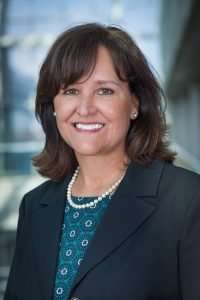
Joanie Martin, Chief Administrative Officer, Michelin
by Joanie Martin, Chief Administrative Officer, Michelin
Since the beginning of the COVID-19 pandemic, Michelin’s No. 1 priority has been the long-term health, safety and well-being of our employees, their families and the surrounding communities. As a Michelin employee for more than 23 years, I am especially proud of the resilience and agility demonstrated by our organization and employees during this unprecedented time.
As a sustainable mobility company, Michelin is focused on giving people a better way forward. This commitment has and will continue to guide our leadership team as we care for our customers, employees and business. With more than 20,000 employees in the United States and Canada, we are continuing to adjust to new ways of living and working during the pandemic recovery.
Throughout this crisis, I have been especially grateful for the unwavering support of our people who are the heartbeat of our company. Together, we have found new and innovative ways of working to move our business forward despite many challenges and a predominantly remote work environment. While a portion of our manufacturing sites were idled due to broad effects of the COVID-19 response, several of Michelin’s plants in the Upstate continue to operate at full or reduced capacity. Many of these plants are responsible for supplying tires for vehicles that are essential to keeping our country running, including ambulances, firetrucks, military vehicles and trucks that carry goods across the country.
In addition, our company is proud to play an active part in the ongoing battle against the COVID-19 pandemic, both by increasing the number of masks it donates to healthcare workers in the countries where it operates, and by providing masks to its employees across the globe.
Michelin North America recently donated 700,000 masks to hospitals, medical facilities and essential businesses with a critical need for these supplies. Donations were delivered to the medical communities in Alabama, Georgia, Florida, Indiana, Kentucky, North Carolina, Oklahoma, South Carolina in the U.S., and Nova Scotia and Quebec in Canada.
In response to the challenges faced by long-haul truck drivers from restaurant and rest stop closures, Michelin sites in Canada and the U.S., provided free lunches during the month of May as a way of expressing gratitude to these essential workers.
As we gradually ramp up our corporate offices and slowly bring employees back onsite after months of remote work, I have enjoyed seeing colleagues and collaborating in person. This ramp-up started with a small percentage of those employees returning to the office beginning last month. By following established state and local health guidelines closely, we are keeping employees’ health and safety as the highest priority concerning staffing and other operational decisions.
Across all of our sites, we’re continuing to follow CDC guidelines and a number of health and safety measures have been implemented: adjusting shift schedules to allow extra time for social distancing on arrival and departure; disinfecting every work station before and after each shift; employees participating in personal health screenings prior to facility admittance; measuring every task in the plants for 6-foot separation; providing ample stocks of masks for all employees, including those whose tasks don’t allow 6-foot separation; and adding staff and frequency for cleaning common areas like breakrooms and restrooms.
As we look to the future, Michelin is prepared to continue to meet the needs of evolving mobility behaviors as we serve our customers and communities through the recovery period and beyond. We look forward to strengthened partnerships and collaboration with our local community and business partners as we face unknown challenges together.

Jun 9, 2020 | Staying on Top, UpstateVibe365
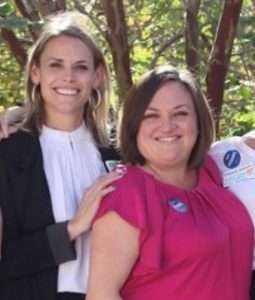
Kathryn Harvey and Mary Dell Hayes
by Kathryn Harvey, Communications Director of Census Open Innovation Labs, Co-lead of the Spartanburg Complete Count Committee, and Founder of Neue South Collective; and Mary Dell Hayes, Project Manager of SC Counts 2020 (on behalf of the United Way Association of SC) and Principal Consultant at StopGap Solutions
In the summer of 1787, our Founding Fathers came together to create the Constitution that our government is based on. In Article I, Section 2, they stipulated that a Census occurs every 10 years to reapportion federal representatives between the states. Since 1790, we have abided by this requirement.
As the years have progressed, funding from the federal government has been determined by the numbers from the Census. In fiscal year 2015, the Census drove over $11.7 billion back to the state of South Carolina from the federal government—that’s about $2,600 per person to support various assistance programs such as law enforcement, social services, public health, housing, and community development.
And in 2020, the Census decides how $800 billion dollars is distributed to towns and cities like ours here in the Upstate. If just 100 people in your area don’t participate, your schools, roads, and hospitals lose nearly $3 million dollars over the next 10 years.
In fact, we’re seeing the Census Count inform federal funding to our state in real time.
Census data is being used right now to determine the amount of relief received to support COVID-19 efforts and aid to support natural disasters like the tornadoes that hit earlier this year.
And if you need one more reason to amplify just how important the count of all the people in this country is every ten years…the Census is about REPRESENTATION. Census data is used to draw lines for U.S. House of Representatives, SC State House, and municipal government seats.
Filling out this brief survey is a way to ensure your place in history is marked, a critical need for many of our communities of color.
There is still time to complete your Census.
The 2020 Census launched on March 12, 2020 with the opportunity to complete this brief survey online and by phone for the first time in history. And with the current health crisis the self-response deadline has been extended to October 31st, giving us more time to get South Carolina counted in new and creative ways.
As of June 8th, SC is ranked 40th in the nation for census response—just below Texas. The top ten ranked counties in the state include Anderson in fifth place at 62.2%, Greenville in sixth place at 62.1%, and Spartanburg in ninth place at 60.2%. We can and must get every resident counted to ensure our state has the resources we need for the next 10 years.
Getting a complete count in SC is key to advancing equity in our state.
- The Census informs representation in congress. South Carolina gained a seat in 2010
- The Census influences where broadband is installed. This is even more critical now that we’ve seen the great divide grow greater between virtual learning, distribution of healthcare information, and more this year.
- The Census is an opportunity to let everyone know how and where our state is growing. How many children? Elderly? Students?
So how do we do this?
We live in a region that is rich with diversity. As such, the bulk of our efforts lie in helping our Hard-to-Count communities to complete the Census. HTC communities are defined as historically undercounted and underrepresented groups of people such as racial and ethnic minorities, millennials, young and mobile individuals, families with young children, and rural communities. Click here for an interactive Hard to Count Map.
We collaborate with our incredible community partners. The best way to get accurate information out about the importance of completing the Census is through trusted messengers and compelling collateral.
How can you help? Join the National Day of Action on June 17th.
Lt. Governor Pamela Evette has challenged each county to get 200 households to complete the Census, for a total of 10,000 households across SC—that’s a 2% increase across the state.
- Have your company pledge to count all its employees
- Share how you have completed the census on social media
- Plan a phone tree and reach out to folks you know may have questions about the census
- Talk to your faith-based organization about including it in their newsletter or bulletin
- Click here if you are interested in receiving periodic updates about Census 2020 efforts in Spartanburg County
Questions? Contact Mary Dell Hayes or Kathryn Harvey.
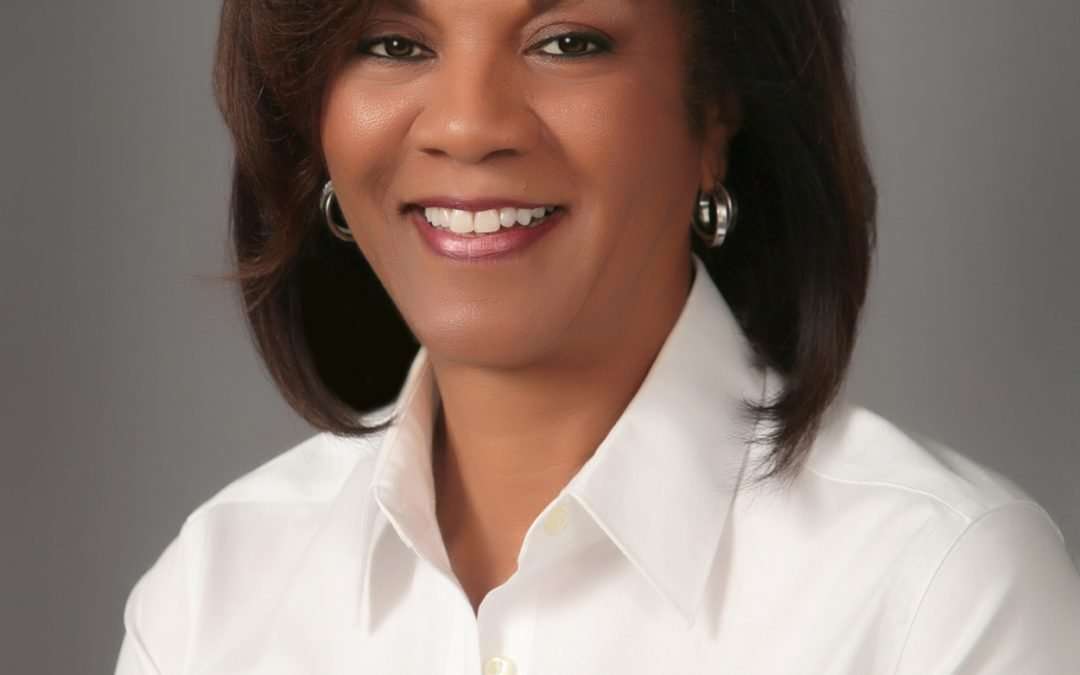
Jun 9, 2020 | Staying on Top, Uncategorized, UpstateVibe365
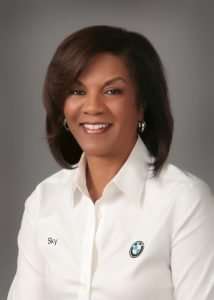
Sky Foster, Manager of Corporate Communications, BMW Manufacturing
Q: What were the primary factors that led to BMW shutting down production at the Upstate facility?
The health and protection of our associates was the primary factor that led BMW Manufacturing to stop production on Sunday, March 29. At the same time, the coronavirus pandemic had a major impact on the global supply chain and customer demand for cars.
Q: Do you all have short- and/or long-term concerns around some potential supply chain issues? If so, what actions have you all done to help offset them?
One of the greatest strengths of our plant is flexibility. Our procurement and logistics teams are very experienced in dealing with any supply chain issues, from bad weather to traffic situations. It was no different during the coronavirus pandemic, just intensified. Going forward, we will continue to be flexible and adjust our production as the supply chain dictates.
Q: You were among the employees who still were at the plant while the production line was closed. What was your primary focus during that time period?
As communications manager, my team and I had to communicate internally with our associates and externally to the media. Internally, we prepared videos, signage, a booklet and other materials to let associates know how we would protect them when they returned. Externally, we responded to media requests about our changing production operations and the global supply chain.
Q: Is BMW in conversations locally and regionally with other manufacturers regarding best practices when it comes to safety and social distancing?
Yes, BMW always seeks out best practices when it comes to the health and safety of our associates. Besides seeking the advice of the CDC and SC DHEC, we have contacts with many manufacturers and suppliers in the southeast to exchange ideas and best practices on a variety of topics.
Q: What are the most significant changes that you all have implemented to create social distancing and address health concerns?
During the non-production time, BMW implemented a variety of deep cleaning and safety measures. This included disinfecting equipment in all technologies, sanitizing workstations, remodeling layouts to enhance social distancing, and completing preventive maintenance on equipment. New guidelines and procedures have been implemented at the plant to help mitigate the spread of COVID-19. These include temperature self-checks, modified seating for cafeteria and office areas, staggered lunch schedules, and expanded cleaning practices. Face masks are required for anyone who cannot maintain the required 6-foot social distance. BMW will continue to follow these and other CDC-recommended procedures.
Q: What changes do you see in manufacturing generally and at BMW in particular due to COVID-19 that are likely to be permanent?
The most likely change we see is fewer in-person meetings and more virtual meetings.
Q: Are you all back to full production yet and if not, is there any timeline for when that should happen?
BMW’s strategy for returning to production was a phased approach. We brought back one shift on May 4 and carefully managed our supply chain over the next four weeks. On May 31, our second shift returned. Over time, as the supply chain improves, our production will continue to grow. We’re not at full production yet, but we are on our way back.
Q: What is the status at the BMW Zentrum? Is there a timeline for reopening to the public?
The Zentrum museum is tentatively scheduled to reopen mid-summer with special safety and social distancing measures in place. Tours of the manufacturing plant will be announced at a later date.
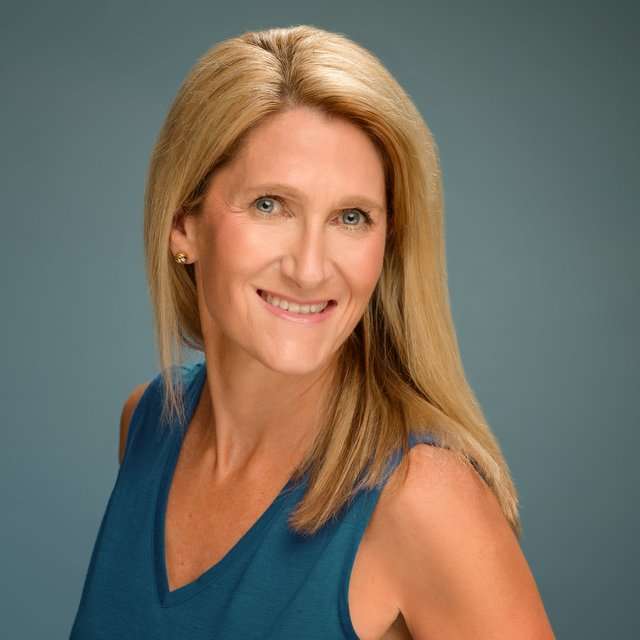
Jun 3, 2020 | Staying on Top, Uncategorized, UpstateVibe365

Caren Senter, Communications Manager and Program Director at Upstate International
by Caren Senter, Communications Manager and Program Director at Upstate International
Learn a new language at Upstate International this summer! Our classes have gone virtual and people are loving the new experience, according to Christine Hofbauer, Upstate International’s language school director. UI has discovered that online teaching has some definite advantages, not the least of which is ease of use and time-efficiency with no need to drive to class. Hofbauer admitted that it was a challenge to get the teachers, all of whom are volunteers, to learn the new technologies necessary to transition to online learning. Fortunately, their passion for sharing their language and culture with others was all the motivation they needed and UI has managed to not only retain its teachers but also add new ones who are teaching from their home countries of Germany and Mexico.
To everyone’s surprise, once the initial technical issues were overcome, students have found that the learning experience is enhanced in a number of ways. For example, there is more time devoted to teaching and learning as there are significantly fewer distractions and it is easier to be on time for class without worrying about traffic and weather conditions. Of course, the weather has occasionally affected internet connections, so it isn’t perfect. The classroom is also surprisingly easy for the teachers to control online, giving each student equal opportunity to practice speaking, ask questions, and engage with one another. In addition, Hofbauer noted, the teachers are better able to share materials with their students through the use of Google docs, and they have easy access to the internet during a class and can share their screen immediately with their students. Moreover, students can use the chat capabilities to ask teachers questions without interrupting the class.
Hofbauer is thrilled that UI’s students are not just from the Upstate anymore, either. While UI has broadened its horizons out of necessity, it is broadening the connections among students and teachers. Of course, Hofbauer admits that everyone misses that before- and after-class social interaction that happens in person, but they are already hearing stories of new friendships being forged online. While, initially, some students may have been a little intimidated by the online format, they became more relaxed, more comfortable, and more focused in just a few short weeks.
Upstate International has been teaching languages since its inception over 20 years ago. It began with a simple English Conversation Club that met somewhat informally to allow recent expats, and other non-English speakers, to work on their English. Hofbauer got involved with UI 16 years ago, volunteering as an English Conversation Club facilitator. Today, UI offers anywhere between 15 and 22 foreign language classes each semester.
Membership levels have remained steady in spite of the transition to online.
Most prefer the in-person experience, but there are some that we have connected with who would not have otherwise found UI. Hofbauer says that one of the most surprising benefits to the transition we have made is that we can actually offer more classes since we are not confined to UI’s 4 classrooms. Going forward, Hofbauer hopes to have more students utilize our services who are not located in the Upstate, and to increase our roster of teachers to include many more teaching from their home countries; the only challenge then will be scheduling classes that work in a variety of time zones. UI and Hofbauer are embracing the new normal and plan to continue with live online classes as an option even once some in-person classes are allowed; a combination of both will provide the greatest access to foreign language learning for our community.
You can see the full list of languages and register for UI’s summer classes here.
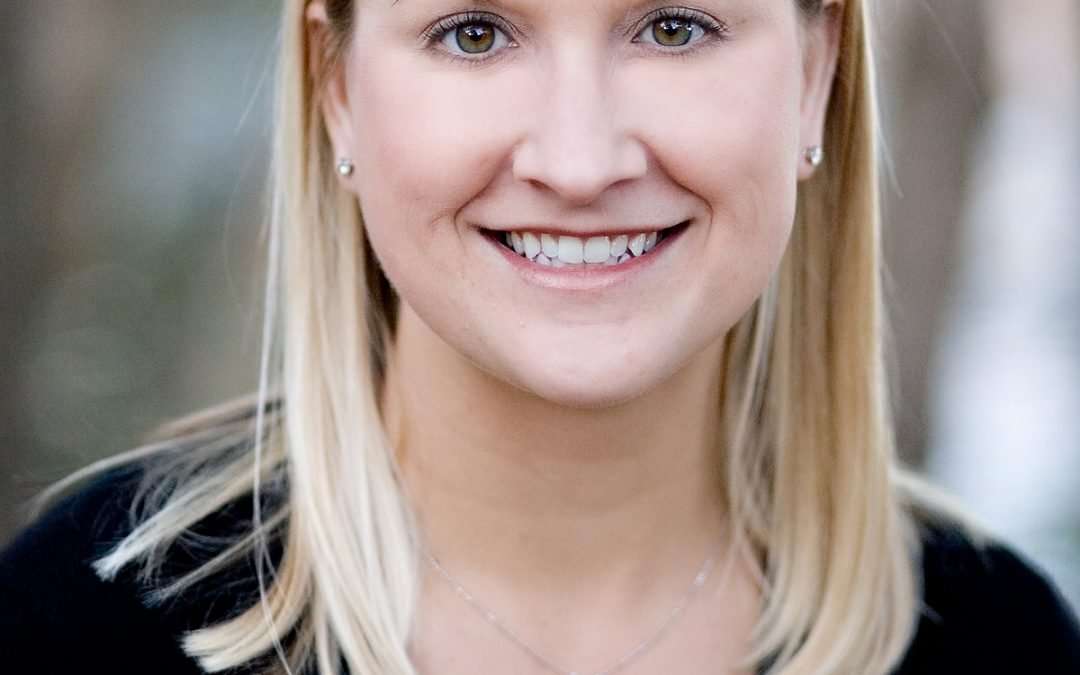
Jun 3, 2020 | Staying on Top, UpstateVibe365

Sara Hazzard, President and CEO of the South Carolina Manufacturers Alliance
by Sara Hazzard, President & CEO of the South Carolina Manufacturers Alliance
The Palmetto State’s manufacturing sector has long been the backbone of our economy. From our manufacturing heritage rooted in textiles to the addition of other sectors including automotive, tire, aerospace, chemical and more, South Carolina’s manufacturing industry has developed a global reputation as a manufacturing powerhouse and has experienced record growth in recent years.
It goes without saying that the impact of COVID-19 on the economy has been unprecedented. Never before have our state and nation seen such an extreme economic contraction in such a short period of time. According to the South Department of Employment and Workforce (SCDEW), the South Carolina unemployment rate increased from 2.5% to 12.1% from March 2020—April 2020. Approximately 211,000 South Carolinians became unemployed during that two-month timeframe.
In April, the industries hardest hit were:
- Leisure and hospitality, down 125,300 jobs
- Professional services, down 40,700 jobs
- Education and health services, down 28,900 jobs
- Trade, transportation, and utilities, down 27,900 jobs
- Manufacturing, down 12,900 jobs
Source: SC Department of Employment and Workforce
According to an analysis by Dr. Joey Von Nessen, Research Economist with the University of South Carolina’s Darla Moore School of Business, this contraction is particularly unusual because the actions that led to it were intentional, as countries and states implemented various shelter-in-place and stay-at-home-orders, and in some cases mandatory closures. South Carolina was incredibly fortunate that from the beginning of the COVID-19 outbreak, manufacturing was considered an essential business sector and remained open for business. However, closures in other states and nations caused, and in some isolated cases continue to cause, supply chain disruptions.
Von Nessen also points to manufacturing, as compared to other sectors of South Carolina’s economy, as having a much greater impact in terms of its combined contribution to both GDP and employment. Thus, our state’s economic recovery depends on the success of the manufacturing industry.
While the overall unemployment numbers for our state, our country’s GDP growth, and many other indicators clearly show a retraction for manufacturing, it is important to note that our state and federal leaders have recognized that reopening our economy in a safe and prudent manner is a top priority. In order to jump start this effort, in April, Governor Henry McMaster established the AccelerateSC task force, which was charged with leading the state’s economic revitalization.
The task force issued its final report and recommendations last week to South Carolina Governor Henry McMaster, which include asking the General Assembly to support COVID-19 liability protection legislation and a plan for allocating the state’s COVID-19 federal funding. The federal funding recommendations include $500 million toward the state’s Unemployment Insurance Trust Fund, funding to establish a 28-day PPE state stockpile, and $80 million for broadband expansion, as well as funding for other critical needs.
Critical funding and policy decisions by the General Assembly will be essential in South Carolina’s economic recovery. Particularly, the adoption of limited COVID-19 liability protections will allow employers to operate with confidence and have certainty that if they act in good faith and implement recommended guidance to protect their employees and customers, then they will not be subject to unnecessary and burdensome lawsuits. The South Carolina Manufacturers Alliance along with a coalition of other organizations are working closely on this issue.
It is no small task, but South Carolina has a history of rising to the occasion to meet difficult challenges head-on. Some recent positive signs of our initial recovery are that, according to SCDEW, 78% of all unemployment insurance claims list a return-to-work date and continued unemployment claims numbers have begun to decline, suggesting that South Carolinians are returning to work.
In the coming months there are many unknowns that will impact South Carolina’s continued economic recovery. Will there be new spikes of COVID-19, and how severe will they be? How will the response be handled? What will the reopening of schools and childcare facilities look like, and how will this impact parents and employers? How swiftly will the consumer economy recover, and how will that impact the demand for consumer products? While the future is uncertain, TeamSC and our state’s manufacturers are focused on a safe and full recovery, and the South Carolina Manufacturers Alliance will be with them every step of the way.
ABOUT THE SCMA – The South Carolina Manufacturers Alliance is the only statewide organization dedicated exclusively to the interests of manufacturers. Its mission is to elevate the quality of life for all South Carolinians by advancing the state’s manufacturing industry. The SCMA membership is comprised of more than 200 manufacturing companies that represent more than 80,000 associates in South Carolina. For additional information about the SCMA, please visit www.myscma.com.


 Q: In this present moment, with the protests in the wake of George Floyd’s death and what feels like a much more significant outpouring of support for the African American community and Black Lives Matter by white Americans than we’ve seen before, has your group been doing anything new or different to get people talking in constructive ways?
Q: In this present moment, with the protests in the wake of George Floyd’s death and what feels like a much more significant outpouring of support for the African American community and Black Lives Matter by white Americans than we’ve seen before, has your group been doing anything new or different to get people talking in constructive ways?
